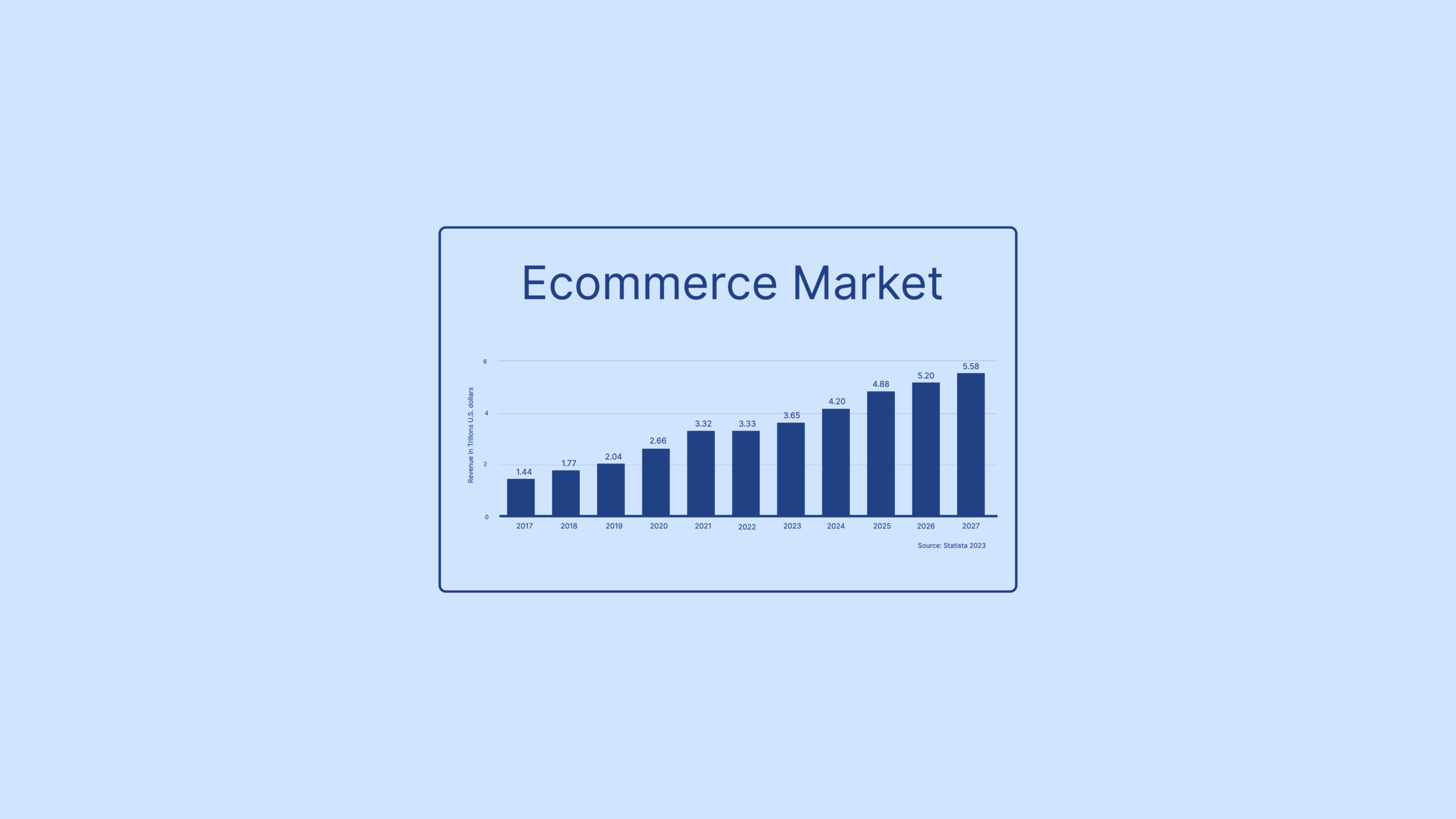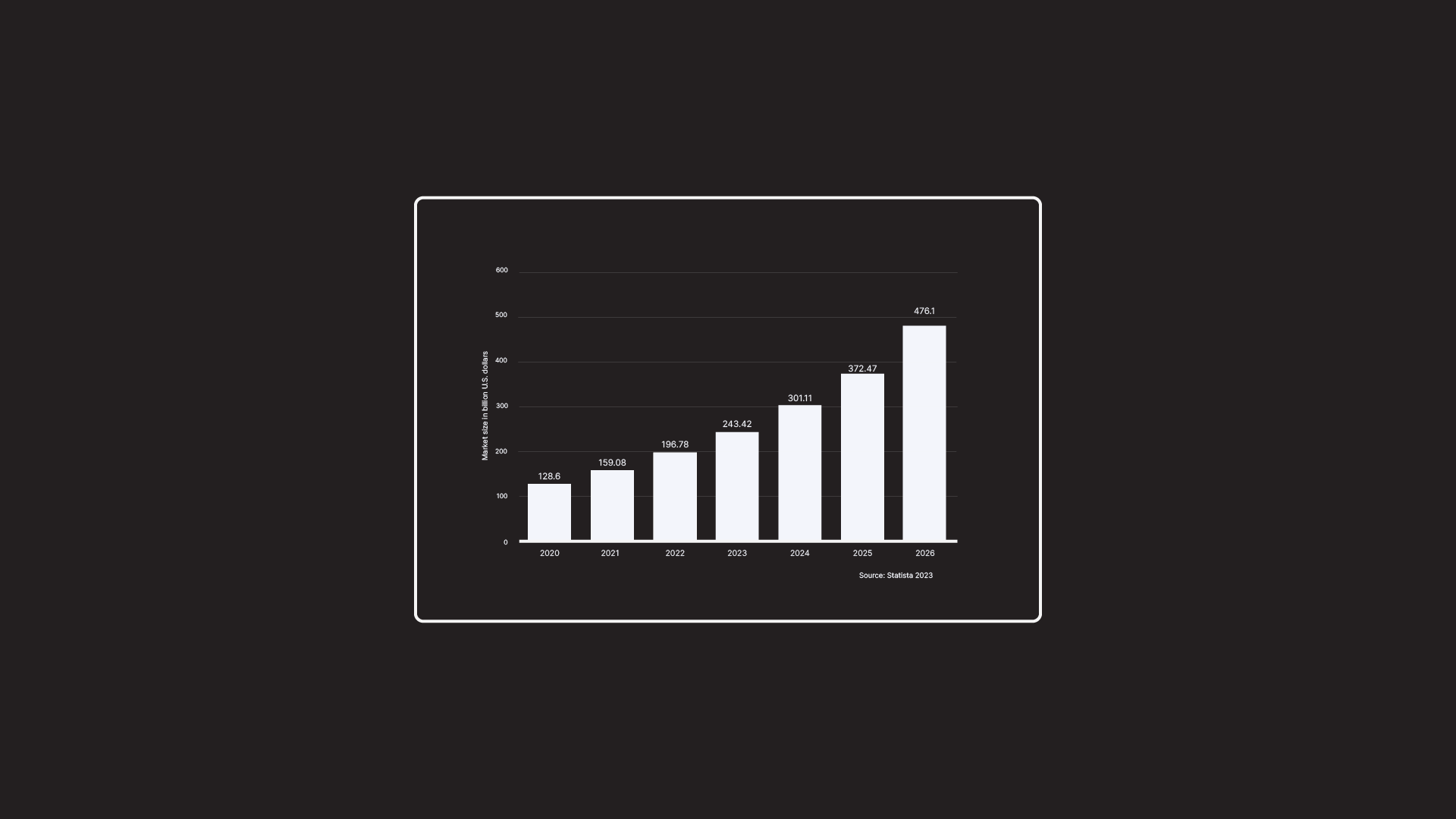Are you looking for e-commerce statistics to use to help grow your business online? E-commerce is becoming present in every industry and country. This has resulted in a booming industry and transformed the way people shop.
Maybe you are selling products online and would like to know which country is the fastest-growing e-commerce market. It’s important to know the e-commerce facts and trends, so you can make the necessary changes to your website and target markets that have the most e-commerce activity.
As e-commerce grows, there are markets and companies across the world that are pioneers and fast adapting to consumer online shopping habits. These e-commerce facts will help us learn why they are succeeding, and then help us adjust our e-commerce strategies accordingly.
If you are looking for the right web hosting for you or the best software for e-commerce, check out our latest guides.
I am going to list the countries that have the most e-commerce opportunity, and which factors make them attractive such as the most popular method of payment.
What is E-commerce?
E-commerce, or electronic commerce, is the buying and selling of goods and services online. This includes the transfer of money and data to execute these transactions. E-commerce is also known as online shopping.
E-commerce Statistics Of The Top 5 Markets In 2023
Which country is the best for e-commerce business? These are the biggest e-commerce markets the world:
1. China
China is by far the fastest-growing and leading e-commerce market in the world. China’s e-commerce market makes up 52% of the world’s e-commerce value, and in 2021 was the fastest growing at 17%.2. Although it is not a surprise, what is interesting is that 97% of online purchases are domestic (within China).
In 2021, China contributed to more than half of the world’s retail e-commerce sales.
The Chinese e-commerce consumer market of 780 million users is still growing and is forecasted to reach 1,223.9 million users by 2025.
Most of these transactions are made with E-Wallet systems. Given that the use of smartphones is also on the rise, local payment companies like Alipay, and Union Pay use a mobile-first approach. The convenience of credit cards comes second as a popular payment method.
JD.com (previously 360buy) is China's largest online retailer and its biggest overall retailer, as well as the country’s biggest Internet company by revenue. Since its launch in 1998, has evolved from a brick-and-mortar business to an online business. It has now grown to a $114.3 billion revenue giant.
JD.com is a player among well-known successful E-commerce companies such as:
- Alibaba: USD 109.480 billion
- Tencent: USD 73.56 billion
- Baidu: USD 16.4 billion
- Vipshop: USD 15.61 billion
The China e-commerce market has produced creative ways such as live shopping and social media e-commerce. The live shopping strategy comes from the Chinese market, which allows us to create strong links between brands, influencers, and consumers.
Social media e-commerce is growing thanks to the most popular social network in the country, Wechat. Wechat also known as ‘the Super App’, is owned by Tencent and has more than 1 billion users per month. The network offers an all-in-one instant messaging system.
Singles Day takes place on the 11th of November (11/11 representing 4 single people), is a valuable opportunity to drive major e-commerce sales and revenue for Chinese brands and western retailers.
The e-commerce market in China is forecast to reach over US$ 3 trillion in 2024.
Here are the Statista highlights to know about the China e-commerce market:
- Revenue in the e-commerce market is projected to reach US$1,412.00bn in 2022.
- Revenue is expected to show an annual growth rate (CAGR 2022-2025) of 4.82%, resulting in a projected market volume of US$1,626.00bn by 2025.
- With a projected market volume of US$1,412.00bn in 2022, most revenue is generated in China.
- In the e-commerce market, the number of users is expected to amount to 1,230.4m users by 2025.
- User penetration will be 71.9% in 2022 and is expected to hit 83.9% by 2025.
- The average revenue per user (ARPU) is expected to amount to US$1.35k.
2. The United States of America
Though the United States of America (USA) has been a leader in e-commerce until 2013, it has valuable insights that can help inform your online shopping strategy. It is currently in second place and makes up about 19% of the global e-commerce market.
The United States' revenue in the e-commerce market is projected to reach US$907.80bn in 2022.
Similar to the Chinese market, trends suggest that online shopping is on the rise in the USA market. Statista research predicts that the number of users will reach 291.2 million users by 2025.
About 97% of the online shopping transactions are domestic.
The credit card is the most popular payment method, both online and in-store. Though credit cards are in the lead, alternative online payment solutions such as PayPal, stripe, and others are on the rise.
Similar to the Chinese market, the biggest contributor to the USA market is the major e-commerce player Amazon. American companies like Amazon are popular locally and internationally as well.
Jeff Bezos’ company (Amazon) is a global player and a leader in business-to-consumer e-commerce worldwide. Amazon has a presence in a variety of industries and verticals, such as Prime Video, AWS Data centers, and its in-house microwave brand. This business model has turned Amazon into a behemoth that generates USD 367.19 billion and with a market cap value of $1.468 Trillion in April 2022.
Amazon is not the only American e-commerce player serving many consumers. Other big players are:
- Walmart: USD 64.62 billion
- eBay: USD 38.67 billion
- Apple: USD 33.62 billion
- Best Buy: USD 20.34 billion
In addition, the USA has launched social media companies that are used by the world daily, which presents opportunities for social media e-commerce growth. These include Snapchat, Twitter, and Facebook, now known as Meta, encompassing Messenger, WhatsApp, and Instagram.
The USA e-commerce market is particularly marked by Black Friday, which takes place on the Friday after Thanksgiving. It traditionally marks the start of the Christmas shopping season in the United States but was established to help brick-and-mortar businesses turn a profit. Many stores offer highly promoted sales at discounted prices and often open early, sometimes as early as midnight, or even on Thanksgiving.
This is followed by Cyber Monday, created by retailers to encourage people to shop online.
Here are the Statista highlights to know about the USA e-commerce market:
- Revenue in the e-commerce market is projected to reach US$907.80bn in 2022.
- Revenue is expected to show an annual growth rate (CAGR 2022-2025) of 14.56%, resulting in a projected market volume of US$1,365.00bn by 2025.
- With a projected market volume of US$1,412.00bn in 2022, most revenue is generated in China.
- In the e-commerce market, the number of users is expected to amount to 273.7m users by 2025.
- User penetration will be 74.9% in 2022 and is expected to hit 80.4% by 2025.
- The average revenue per user (ARPU) is expected to amount to US$3.62k.
3. Japan
Japan is Asia’s second-fastest-growing e-commerce market, after China. Japan’s B2C market has more than doubled within the last decade.
Japan's revenue in the e-commerce market is projected to reach US$215.10bn in 2022, which is a 14.7% growth. The number of e-commerce users in Japan is expected to reach 106.3 million by 2025.
The online store market is growing and closing in on in-store retailers’ sales, and businesses are shifting to a multi-channel approach to defend their market positions.
Like in the USA market, the credit cards method of payment is the most popular. Consumers also prefer to use cash and Konbini payments in this market.
Cross-border e-commerce in the Japanese e-commerce market is significantly low. This is because the e-commerce landscape maintains a highly sophisticated shopping environment and highly trusts the domestic online retail sites.
The dominant player in the Japanese B2C e-commerce market is Rakuten. This is also significant because this market is dominated by domestic online marketplaces over international players like Amazon and Yahoo.
Rakuten’s growth has seen it acquire many e-commerce sites across the world, over the years, including the U.K.’s Play.com.
The local branches of major international e-commerce companies play an important role in the growth of consumer e-commerce. These companies contribute to the rising popularity of online shopping among Japanese consumers, which reduces the hesitation of locals to transact online.
Though the Japanese market is atypical, the most popular international e-commerce platform is Amazon with a business volume of 12,295 billion dollars in 2020.
Other popular e-commerce platforms are:
- Apple: $2,731 billion
- Yodobashi: $2.581 billion
- Monotaro: $1.356 billion
- Zozotown: $1.136 billion
Similar to the Chinese market, the Japanese have a vibrant social media marketplace. LINE is the leading instant messaging application for social platforms in the country. YouTube is second in the rankings.
Sellers use LINE to reach consumers in Japan and improve customer service and run promotions. Next are the global platforms Twitter, Instagram, and Facebook, as in most parts of the world.
Here are the Statista highlights to know about the USA e-commerce market:
- Revenue in the e-commerce market is projected to reach US$215.10bn in 2022.
- Revenue is expected to show an annual growth rate (CAGR 2022-2025) of 14.70%, resulting in a projected market volume of US$324.60bn by 2025.
- With a projected market volume of US$1,412.00bn in 2022, most revenue is generated in China.
- In the e-commerce market, the number of users is expected to amount to 106.3m users by 2025.
- User penetration will be 76.7% in 2022 and is expected to hit 85.7% by 2025.
- The average revenue per user (ARPU) is expected to amount to US$2.23k.
4. The United Kingdom
The United Kingdom is the fourth-largest market in the world for e-commerce and the most advanced in Europe. In 2021, the UK e-commerce market revenue was US$118 billion which contributed to the worldwide growth rate of 29%, placing it ahead of Germany.
The United Kingdom's revenue in the commerce market is projected to keep growing and reach US$199.90bn in 2022.
By 2025, consumers in the UK e-commerce market are projected to be 62.1 million.
Brexit has influenced consumers purchasing patterns. One that stands out is the domestic consumption rate, which is at 96% (customers buy “locally” 96% of the time).
Similar to the USA, customers prefer to use PayPal and bank card as methods in the market. Another form of payment that is on the rise in mobile payments, companies such as Google Pay and Apple Pay are the popular service providers.
Amazon is the marketplace that is dominating the UK e-commerce world. Amazon’s United Kingdom website has a turnover of USD 14.67 billion in 2020. The other players in the marketplace are:
- Tesco: USD 7.59 billion
- Argos: USD 5.41 billion
- Sainsbury's: USD 4.55 billion
- Currys: USD 4.14 billion
Tesco and Argos are the main players in the online shopping space. Like in China, the social media marketplace commerce is a notable contributor to the market’s revenue. Meta (formerly Facebook) is the favored platform.
Despite its small geography compared to China and America, the United Kingdom is an enormous e-commerce player.
Here are the Statista highlights to know about the United Kingdom e-commerce market:
- Revenue in the e-commerce market is projected to reach US$199.90bn in 2022.
- Revenue is expected to show an annual growth rate (CAGR 2022-2025) of 12.63%, resulting in a projected market volume of US$285.60bn by 2025.
- With a projected market volume of US$1,412.00bn in 2022, most revenue is generated in China.
- In the e-commerce market, the number of users is expected to amount to 58.4m users by 2025.
- User penetration will be 81.5% in 2022 and is expected to hit 84.2% by 2025.
- The average revenue per user (ARPU) is expected to amount to US$3.58k
5. Germany
Germany is the fifth-largest market for e-commerce in the world with a revenue of US$109 billion in 2021, placing it ahead of South Korea and behind the United Kingdom.
This new position is due to the 14% growth of the German e-commerce market in 2021 and has contributed to the overall 29% growth rate worldwide. The number of digital commerce users in Germany is expected to grow to 68.2 million in 2024.
Amazon.de is undoubtedly the biggest player in the German e-commerce market. In 2021, Amazon.de generated a revenue of US$18.1 billion. Otto.de follows with a revenue of US$5.1 billion revenue and the third contributor is zalando.de with a US$2.7 billion revenue. These three firms make up 25% of the German e-commerce online revenue.
PayPal is the most preferred method of payment in the German e-commerce market, with a 24.9% market share.
Germany is expected to keep growing with the significant growth of online shopping in the years to come. The evidence is clear with a company like korodrogerie.de, which has grown by 148% in 2020 and it has achieved sales of about US$57.4 million in 2021.
Here are the Statista highlights to know about the German e-commerce market:
- Revenue in the e-commerce market is projected to reach US$141.20bn in 2022.
- Revenue is expected to show an annual growth rate (CAGR 2022-2025) of 11.46%, resulting in a projected market volume of US$195.50bn by 2025.
- With a projected market volume of US$1,412.00bn in 2022, most revenue is generated in China.
- In the e-commerce market, the number of users is expected to amount to 68.4m users by 2025.
- User penetration will be 80.1% in 2022 and is expected to hit 81.9% by 2025.
- The average revenue per user (ARPU) is expected to amount to US$2.10k.
Key Takeaways
The top five e-commerce markets are an interesting opportunity. If you are looking to enter them, you will have to consider consumer habits and online shopping patterns. China is ahead of the pack, but 97% of its transaction are domestic. This is completely different compared to a market like Germany which does cross-border transactions at a 35% rate.
If you are trying to start an online business, you should take a look at our best online shopping platforms for more options.
I recommend you try Shopify. With Shopify, you have the hassle-free option of starting with a free well-designed template.
Or you could try Big commerce. With big commerce, you can build an Omnichannel and have consistency across all your digital platforms. This means you can offer your customers the same shopping experience on Facebook just as the one on your website.





